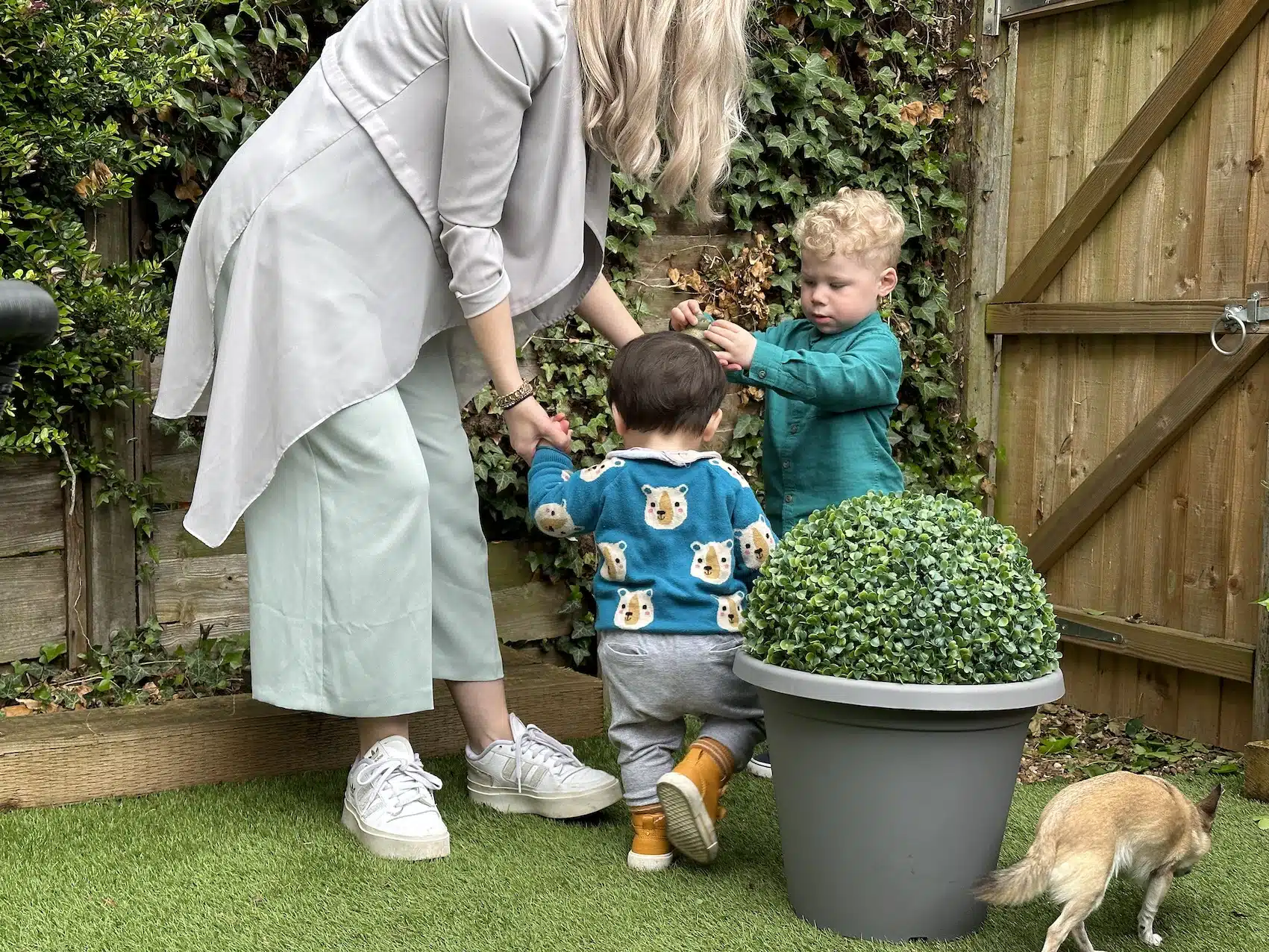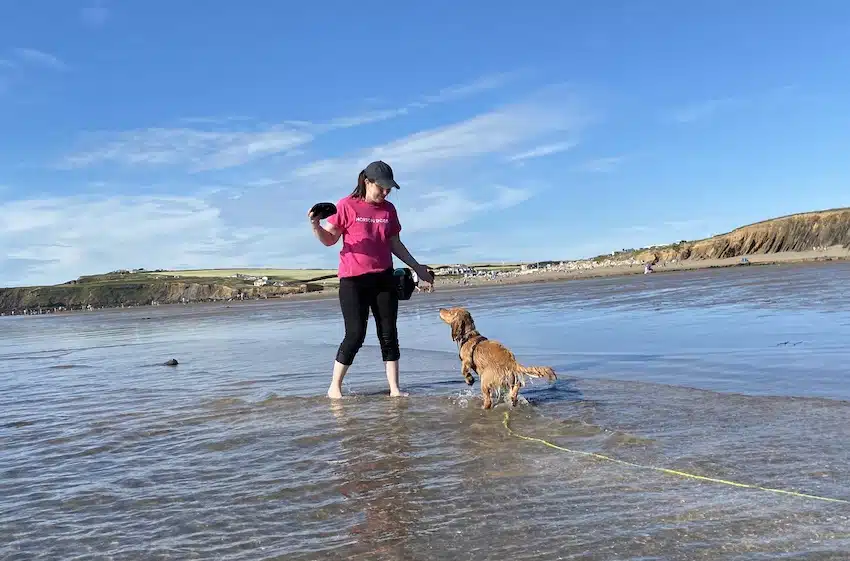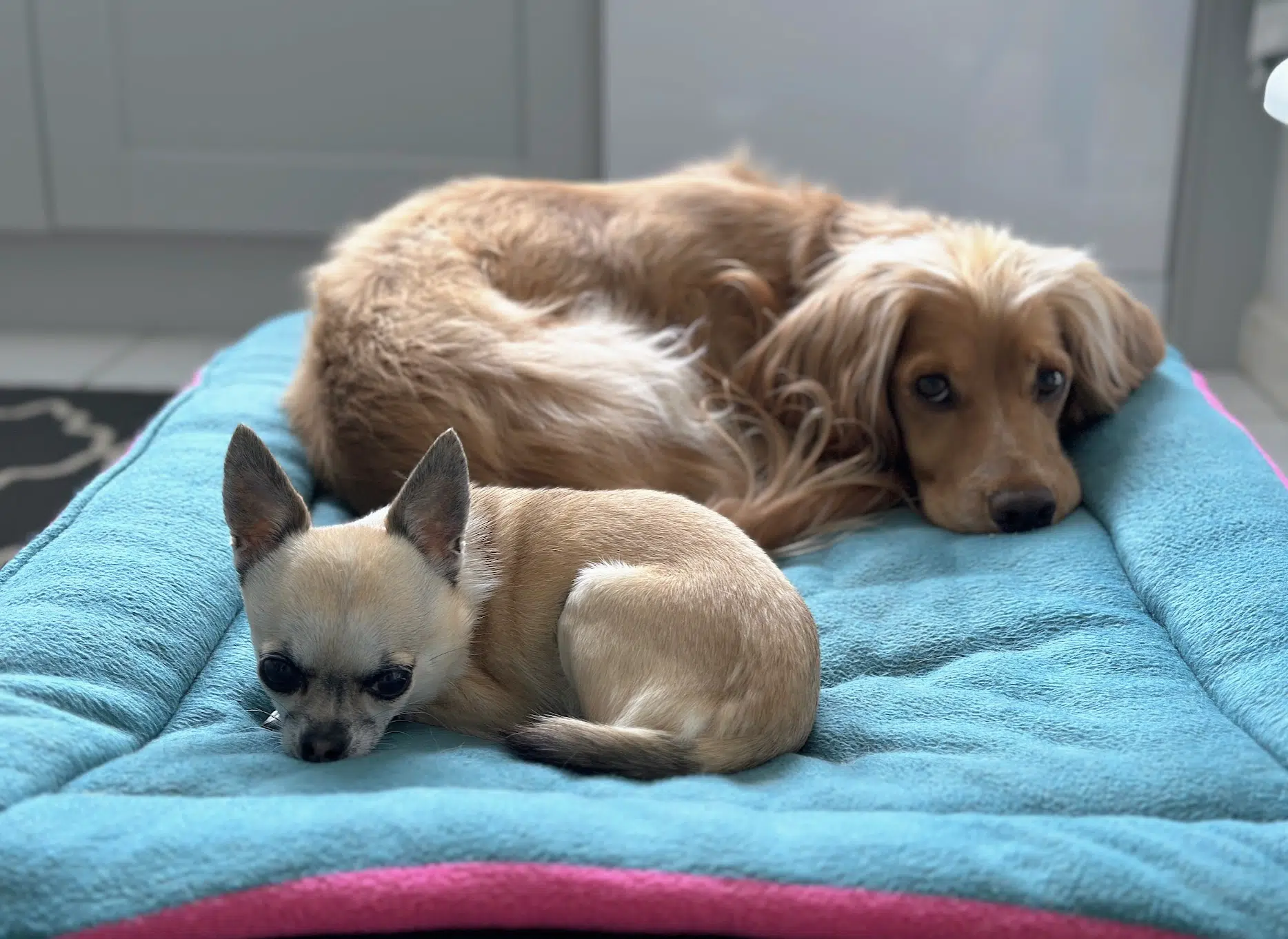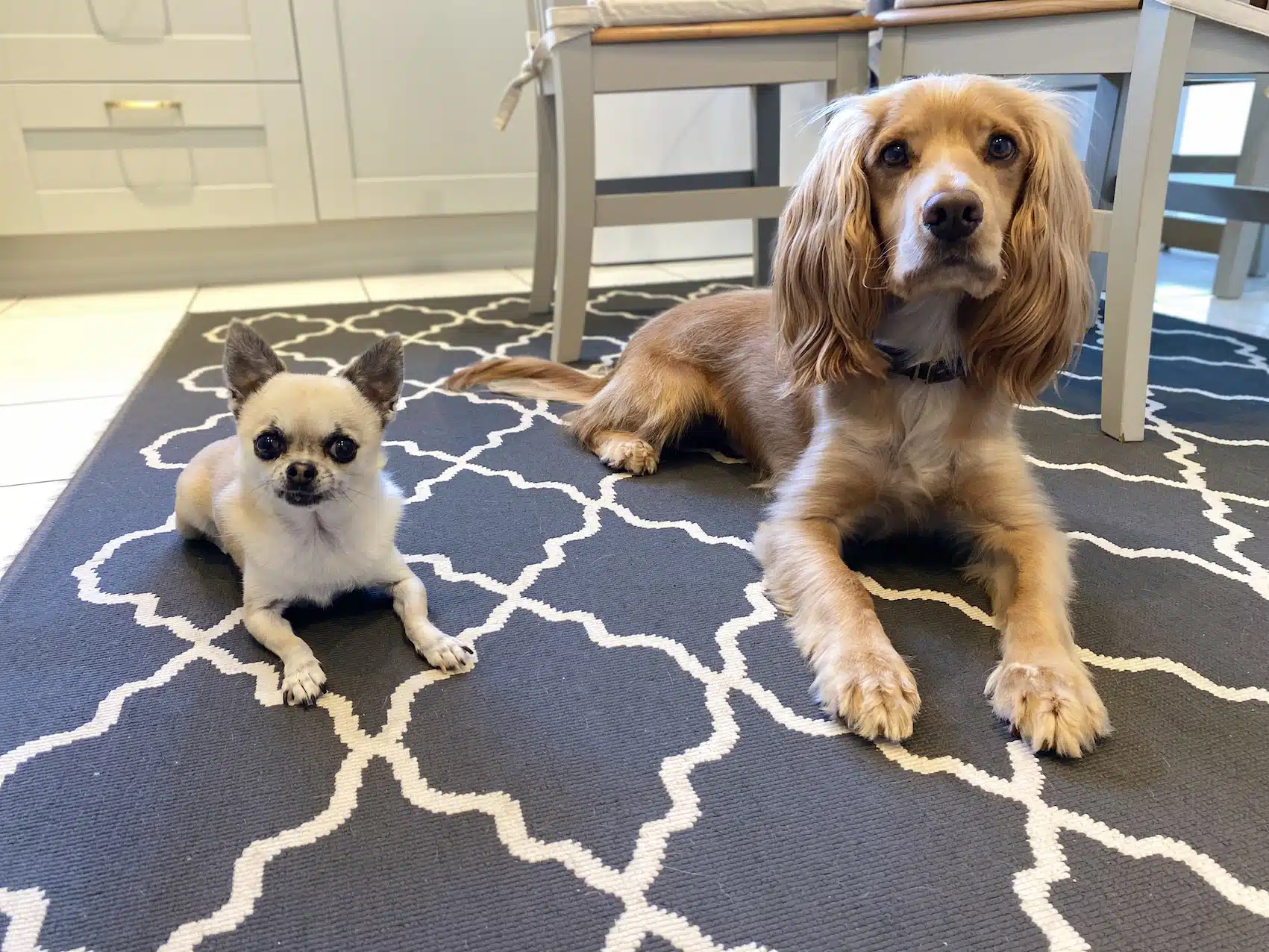Theo's 14 months old, walking and grabbing!
Building a harmonious relationship between toddlers and dogs is crucial for their safety and well-being. There has been a heart breaking rise in the number of children and babies being bitten, many of which could be prevented with the right guidance and understanding. Here is what we are doing to help prevent bites and grow a positive bond between Theo, Pixel and Rocket:
Supervise or Separate
We always supervise interactions between toddlers and dogs to ensure safety for both. Never leave them alone together, especially with younger children who may not understand how to behave around dogs. If we aren’t supervising, we separate. Baby gates, and crates are perfect for this.
Any dog has the potential to bite. When I leave to get a glass of water, either Theo comes with me, or I can shut a baby gate to separate them for a short moment. It takes 10 seconds to do this and now is just a habit.
Boundaries and Personal Space
Boundaries: Our goal is to establish clear boundaries for both the Theo and the dogs. We are teaching him not to disturb Pixel or Rocket while eating, sleeping, or playing with toys. Similarly, our dogs have a strong positive interruption cue to add space between them and Theo.
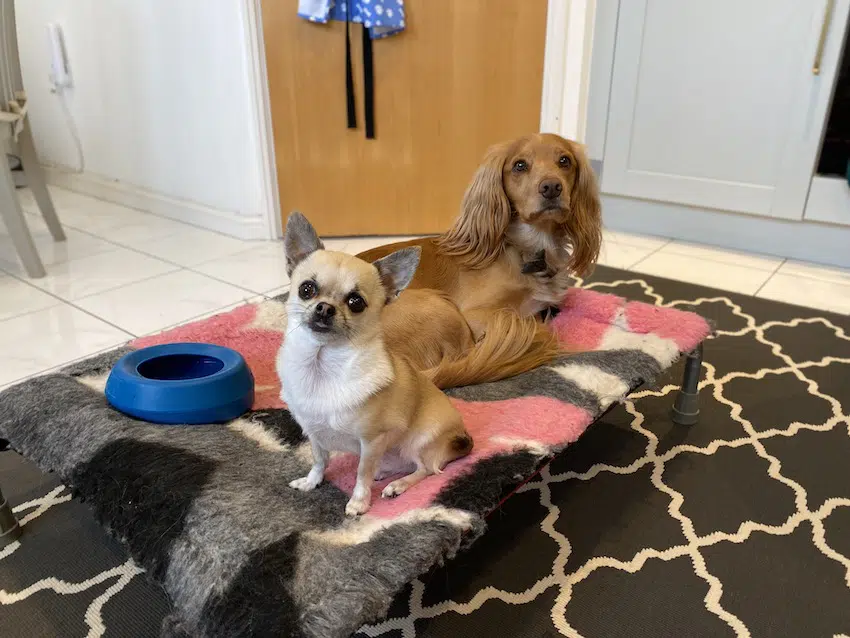
Personal space: Having a designated safe space for the dogs, such as a crate or a separate area where they can retreat when they need some quiet time is really important. We are showing Theo how to respect this space and not to disturb the dog when they are in their area. As he is just a toddler it is up to us to take full responsibility and step in where needed to manage interactions. We usually say “I won’t let you do that” and gently guide him away from the dogs.
Additionally, it’s important to recognise that not all toddlers may want a dog in their personal space, and it’s okay if they don’t want the dog to approach them at certain times. Theo sometimes just wants to play with his toys in peace! We have some fab baby pens we bring out and move around for when we need them, then fold away again.
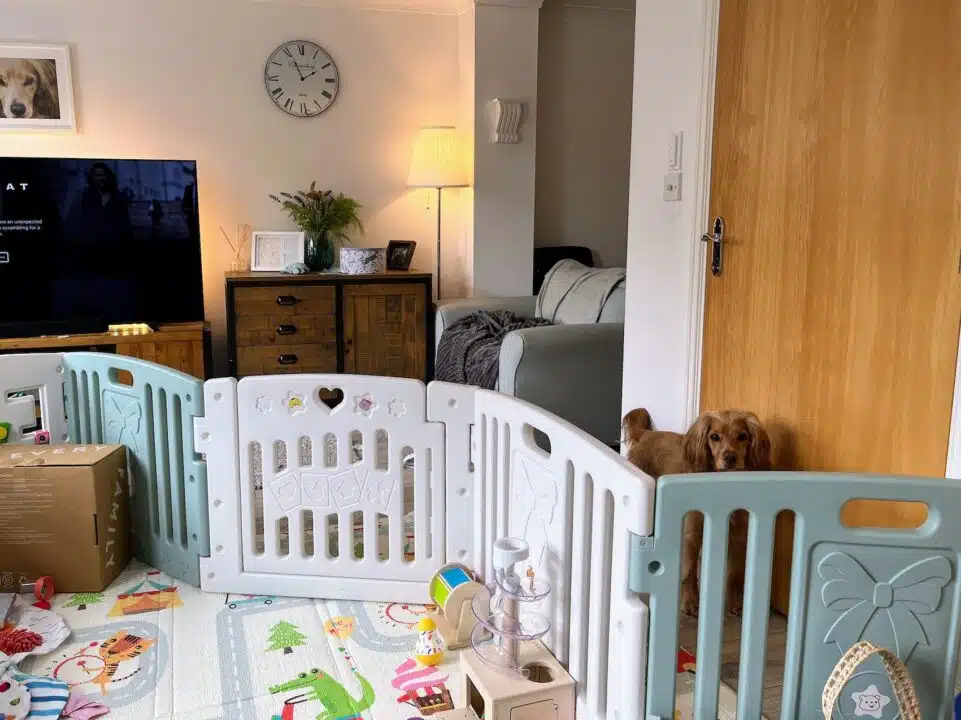
Training Tips
Send to Bed: Teaching your dog to listen to cues, particularly to target a bed, is a really handy skill. It allows you to create distance quickly, especially when you need to attend to your toddler. For us this has really helped in managing their behaviour around Theo and maintaining control in potentially challenging situations. Here is how you can start!
Teach gentle touch: Interacting gently with dogs is a skill we are growing for Theo, using soft strokes with a flat hand and avoiding pulling on their ears, tail, paws or fur. We started on a cuddly toy dog to practice with and encouraged him to be respectful.
Positive associations
We do encourage positive associations by creating enjoyable experiences for Theo, Pixel and Rocket. They engage in supervised play sessions, where he can participate in simple activities like throwing a toy, and we have already taught them to drop the toy by out feet so no hands near their mouths. Another game he can get involved in is helping to hide their toys, Theo certainly love watching as Rocket sniffs and searches for his favourite toys.
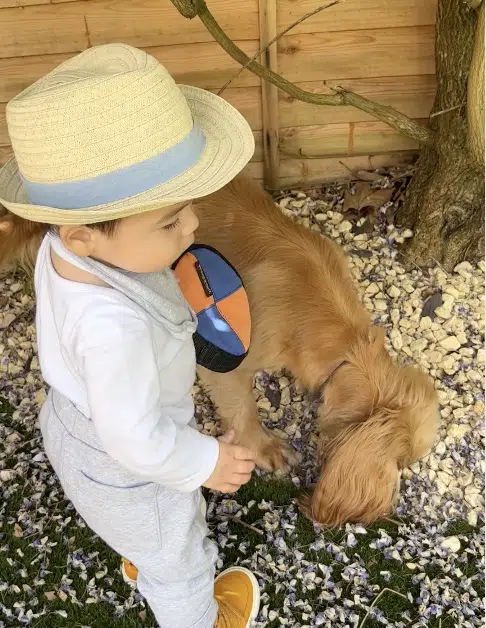
Non event training: A big part of building a good harmonious household is actually making toddlers and dogs a non event to each other. Although it’s good to engage in the odd supervised play and calm strokes, most of the time they really are non of their business. We have built this ‘non event’ as a habit right from the start through gates, separation and gradual integration.
Understanding dog communication
Understanding a dog’s signals and communication is key. Young children will not be able to read these signals effectively, so it is crucial that we supervise and closely observe interactions. While we can start teaching Theo to recognise and respect the dog’s body language, again it remains our responsibility as the adult to closely manage all interactions.
Recognising signs of discomfort or stress, such as growling, barking, or attempts to move away, is essential. Remember, growling is a way for the dog to communicate that they are worried or uncomfortable. Never punish a dog for growling, as this may suppress their warning signals and lead them to skip the growl and go for a bite instead.
We cannot stress enough how important it is to understand our dog’s communications and needs. I love this book Doggie Language by Lili Chin.

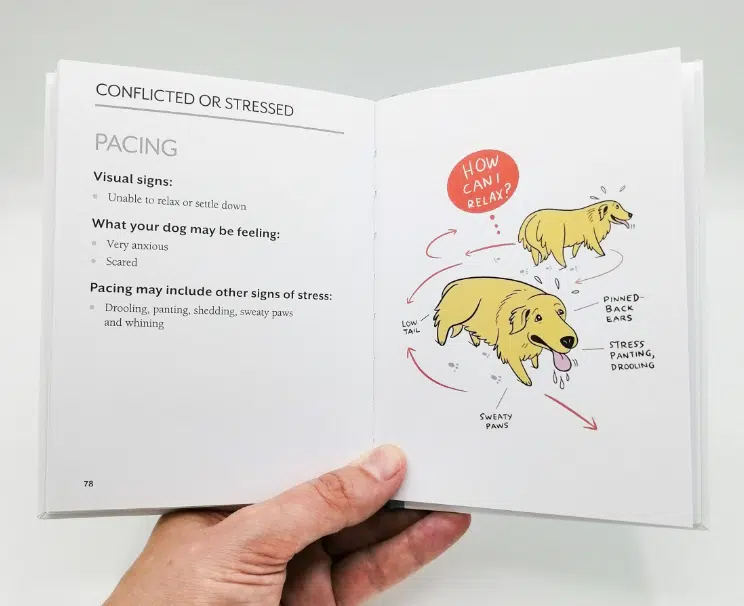
Seek professional guidance if needed: If you’re unsure about how to manage the relationship between your toddler and dog or if you have concerns about their interactions, consider getting in touch for some 121 sessions.
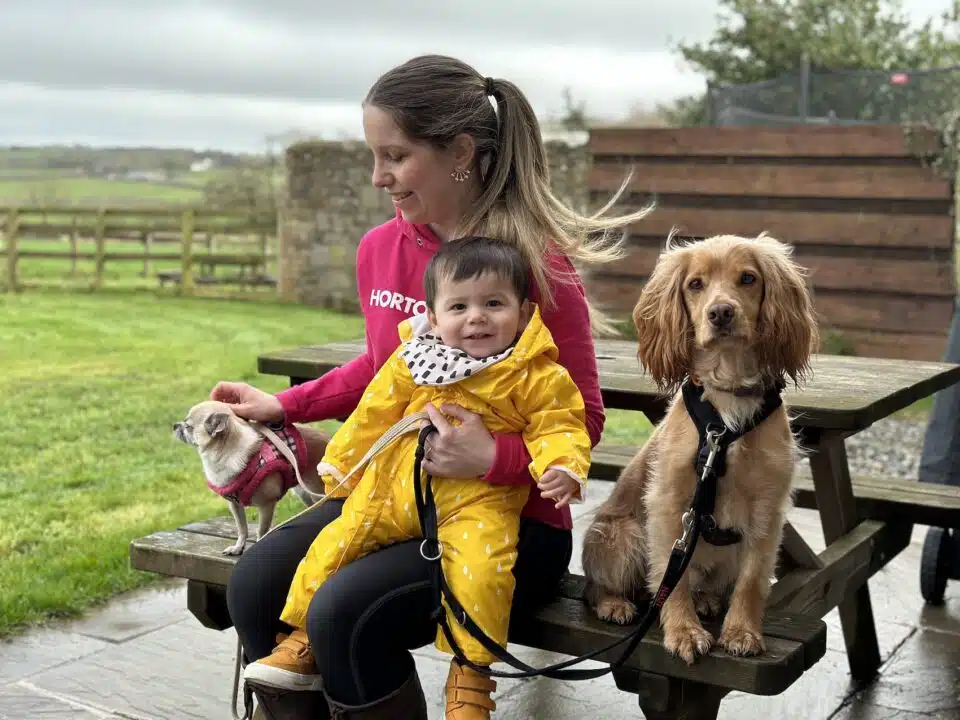
If you would like help and support then contact me and we can look at training options for you.
